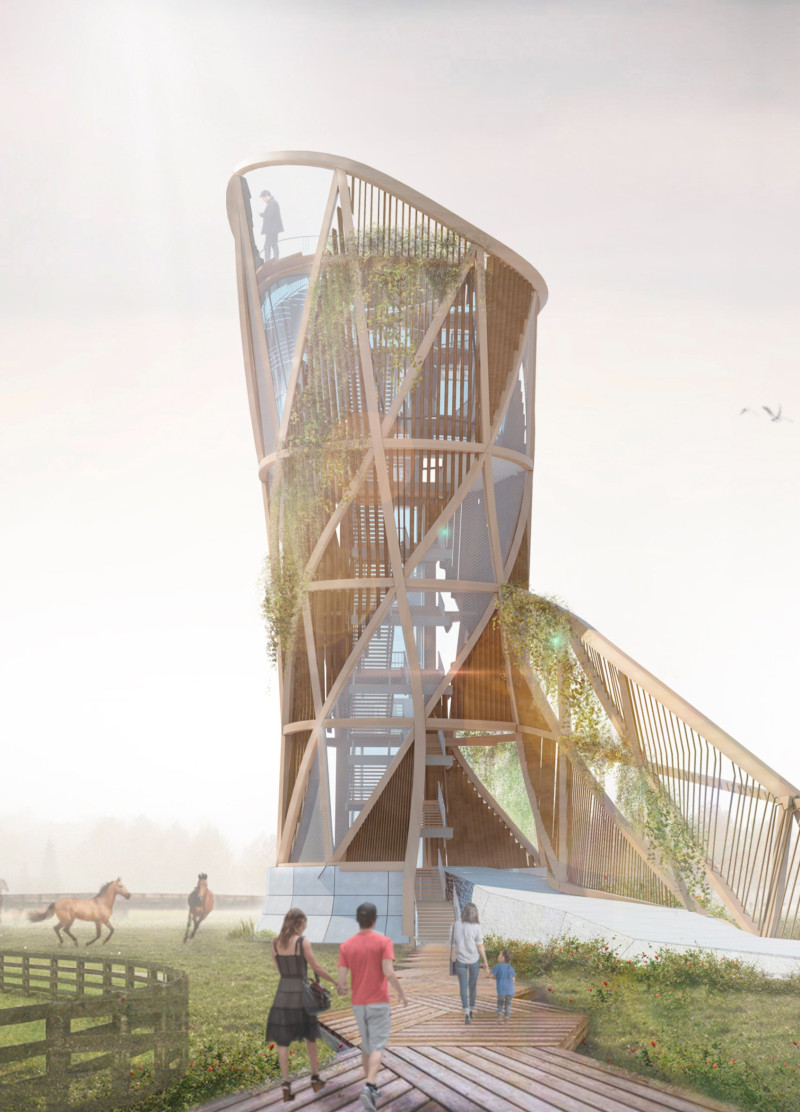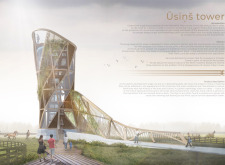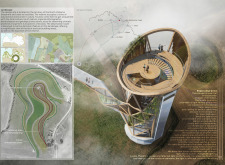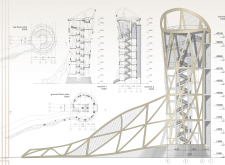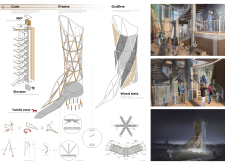5 key facts about this project
Ūsiņš Tower is located in the North Vidzeme Biosphere Reserve and is designed to improve visitor interaction with the natural surroundings. It aims to promote ecotourism by serving as a point of education and awareness about local wildlife and ecosystems. With a focus on connecting people to nature, the tower reflects the importance of understanding the area’s ecological and cultural heritage.
Architecture Concept
The Kurgi observation tower creates an inviting space that raises awareness of the ecological value of the region. It also addresses the conservation of the Latvian Arden horse, a breed that is under threat. The design incorporates elements of local culture and sustainability, drawing inspiration from Latvian mythology, specifically the deity Usins, who is known as the protector of horses. The overall form of the tower resembles a "swirling leaf floating in the wind," highlighting the connection between architecture and nature.
Design Features
The tower has a height of 35 meters, which allows for expansive views of the landscape. Its vertical structure is characterized by a series of pillars that are connected by horizontal elements. This combination results in a geometric pattern that not only looks appealing but also aids in airflow and light distribution within the building. The design supports both functionality and visual interest.
Accessibility and Functionality
Accessibility is a fundamental aspect of the design, ensuring that all visitors can engage with the space. An elevator and staircase link different levels of the tower, accompanied by ramps for individuals with mobility challenges. The upper level includes an amphitheater, which is designated for lectures and cultural events. This feature emphasizes the tower's role as a community space focused on ecological education.
Material Considerations
Materials selected for Ūsiņš Tower emphasize sustainability and environmental compatibility. While specifics are limited, the project incorporates wood, glass, and netting for vertical gardening. These choices enhance its aesthetic appeal and promote biodiversity. The materials help the structure connect with its natural setting, contributing to a harmonious relationship with the environment.
The vertical gardening elements on the facade not only enhance visual quality but also encourage local wildlife, further aligning the design with its ecological focus.


